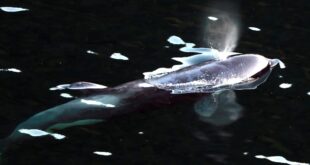We can’t take a galaxy selfie, so scientists look to other galaxies to better understand our own.

The James Webb Space Telescope continues to astound astronomers with new images of the universe not possible with other instruments. A recently released gallery shows stunning details of 19 nearby spiral galaxies that are similar to our own Milky Way.
In an ongoing project called PHANGS (Physics at High Angular resolution in Nearby Galaxies), recent galaxy images taken by Webb will be combined with images taken by the Hubble Space Telescope, the European Southern Observatory‘s Very Large Telescope’s MUSE (Multi-Unit Spectroscopic Explorer) and ALMA (Atacama Millimeter/submillimeter Array) in Chile.
The goal is to examine nearby spiral galaxies, which have the same whirlpool shape as the Milky Way in as many different wavelengths of light as possible — from the visible through to ultraviolet, radio waves and infrared — to better understand the interplay between the small-scale physics of gas and star formation and the larger scale galaxy structures and their evolution.

Spiral galaxies are a favourite subject for astronomers, not only because they are the most beautiful to look at, but because they provide the best insights into the Milky Way’s nature. We can’t actually see our own galaxy because we are inside it.
Astronomers have a rough idea of its spiral shape from the motion of stars, but the image of our galaxy lacks fine detail. It’s like trying to see the layout of your city or town while standing just outside the front door of your home; you would have to fly over the city to get an overall view.
It will be a long time before we get a fly-over image of the entire Milky Way because at more than 100,000 light years across, we would have to fly thousands of light years straight up above the plane before the entire structure comes into view. Currently, we have no means to fly that far.

Webb’s contribution to the galaxy survey is invaluable for two reasons. First: its primary mirror, at 6.5 metres in diameter, is the largest telescope ever launched into space, giving it more than six times the light-collecting area of the Hubble Space Telescope.
The gigantic golden eye in the sky can see fainter, more distant objects, or nearby objects in finer detail than ever before.
Second: unlike Hubble, which sees in visible light like our eyes do, Webb sees in infrared light, which is invisible to us, although we can feel infrared radiation as heat.
The longer wavelength of infrared light enables it to penetrate the vast clouds of dust that are strewn among the stars of galaxies and obscure Hubble’s view. Webb can see through those clouds and reveal details that have been hidden until now.

Galaxies are where stars are born, live out their lives and die. The Webb images show that this process happens from the inside out, with the older stars close to the centre and younger ones within the spiral arms. This fits with the position of our 4.6-billion-year-old sun, a relative newcomer to the Milky Way, located in one of the spiral arms about two-thirds of the way out from the centre.
The new images reveal huge bubbles of gas that were blown out by exploding stars. These remnants of dead stars are the seeds for the formation of younger stars like our sun.

Last September, in another survey, scientists used Webb to look back toward the beginning of time and were surprised to see fully formed spiral galaxies only 3.7 billion years after the Big Bang, about 13.7 billion years ago. This was a surprise because it was thought that spirals were a later stage of galaxy evolution. Astronomers are now re-thinking the evolution of galaxies over the past 10 billion years.
Astronomy looks outwards to study the universe beyond our home. But in the same way that the first astronauts to visit the moon looked back at see their home, for the first time as a small blue globe floating in the blackness of space, studying galaxies gives us a perspective on our larger home: the city of stars we inhabit called the Milky Way.
ABOUT THE AUTHOR
Bob McDonald is the host of CBC Radio’s award-winning weekly science program, Quirks & Quarks. He is also a science commentator for CBC News Network and CBC TV’s The National. He has received 12 honorary degrees and is an Officer of the Order of Canada.
*****
Credit belongs to : www.cbc.ca
 Atin Ito First Filipino Community Newspaper in Ontario
Atin Ito First Filipino Community Newspaper in Ontario







